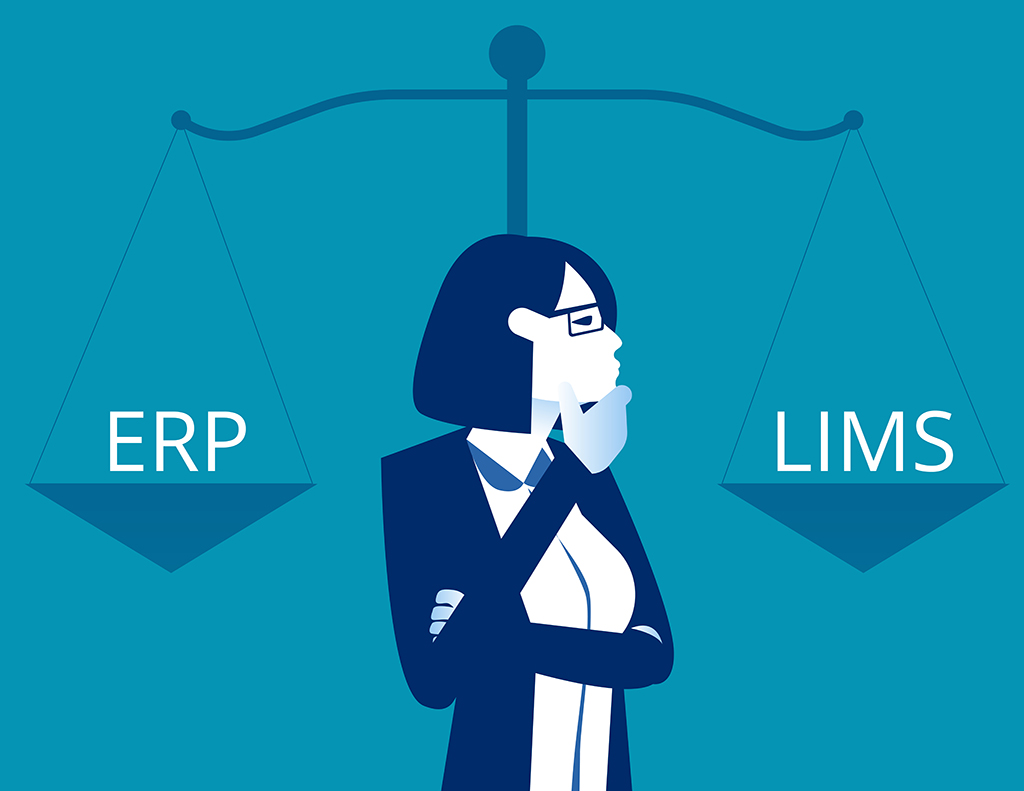Medical device, equipment, and supplies manufacturers need to keep track of so much. From approved suppliers to order history to lot tracing from inspections, it can be overwhelming to organize your data for maintaining compliance. Software like a Laboratory Information Management System (LIMS) or Enterprise Resource Planning (ERP) system can help you store and manage this data, but which should you use? In this blog, we will describe when to turn to LIMS, when to turn to ERP, and when an ERP-LIM integration might be the best option for your business.
The Difference between ERP and LIMS
ERP is usually intended to support everyday business functions like accounting, procurement, risk management, and supply chain management. In contrast, LIMS is designed to be a ‘system of record’ for managing samples and laboratory data.
The Benefits of ERP
The right ERP makes it simple to run your business by managing processes like supply chain, finance, services, procurement, human resources, and more. For medical manufacturers, supply chain management is particularly important, especially for traceability. Being able to track transactions by order, lot or serial number as well as clearly defining the supply chain per product is imperative.
For medical manufacturers looking to track their data at both the macro and micro level, an ERP can be an excellent choice. At Datix, we give our clients ERP solutions that are specifically tailored to their organization using our business-first approach. By taking the time to understand what makes your company unique, we ensure that your ERP implementation has all the tools and functionalities you need. Learn more about our ERP solutions for medical manufacturers.
The Benefits of LIMS
As a ‘system of record,’ medical manufacturers typically use a Laboratory Information Management System (LIMS) to oversee lot tracing and sample history. With a LIMS, it is valuable to be able to analyze specific samples minutely to ensure compliance.
An ERP-LIMS Integration
Clearly, both ERP and LIMS can bring value to medical manufacturers, but they serve different functions. Because of this, many manufacturers elect to have both an ERP and a LIMS. Unfortunately, when an ERP and LIMS are separated, data becomes siloed, or teams are forced to operate disjointedly within two systems. To gain a 360-degree view of your data, consider an ERP-LIMS integration.
With an ERP-LIMS integration, your team can continue to use the software they are familiar with, while operating out of one, united system. In the event of an issue, an integration makes it simple to identify what lots are suspect, see their usage data, look at the bill of material for the lot, see all the points of consumption, and see what customers it impacted.
In the event of a recall, an integration will make you react faster than you can with a disconnected system. Not every integration can handle connecting LIMS and ERP while maintaining compliance. Unity: Integration by Datix is a pre-built application that is fully managed and designed to be scalable. Learn more about the advantages of an integration with Unity.
Wrap Up
An ERP, LIMS, or ERP-LIMS integration could be the right solution for your business, depending on your needs. If you want support exploring software options to take your organization to the next level, talk to the experts at Datix. As a one-stop shop with 25 years’ experience, our experts can support business needs from integrations, hosting, disaster recovery, business intelligence, and more.
Read more about Effectively Managing Your Multi-Level Supply Chain
About Datix
For medical manufacturers, Datix is the software consultant of choice. We recognize that each manufacturer is unique and requires a tailored solution to meet their business goals. Our team will partner with you every step of the way to bring your organization to the next level.


